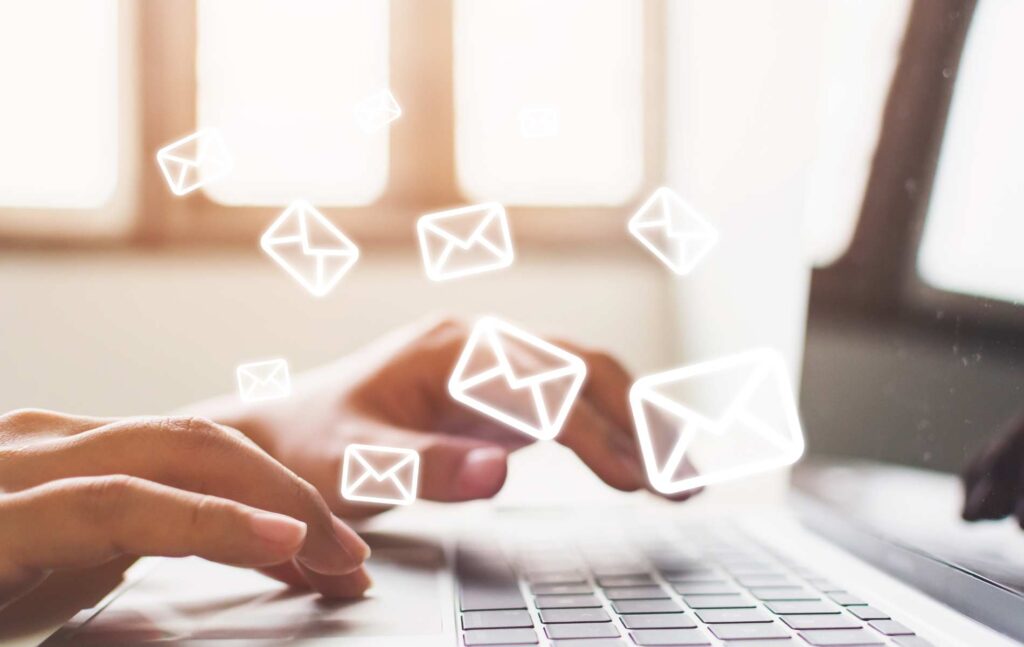These days, people check emails like clockwork. Newsletters tap into this daily routine, making them one of the most powerful marketing tools for growing a business of any size. Therefore, it’s crucial to learn how to write a newsletter effectively.
Whether you’re looking to increase brand awareness, strengthen client relationships, reach new clients or drive traffic to your website, newsletters offer a targeted approach to achieving these goals.
Want to master how to write a newsletter? Our guide has all the tips and tricks you need.
What is a Newsletter?
Newsletters provide businesses with a direct line to subscribers’ emails where they can share relevant and valuable content like informative articles, insider tips, business news and event announcements in their inboxes. They don’t sell products; rather newsletters are intended to keep your subscribers informed.
How to write a newsletter in 10 easy steps
Below we share our 10 easy steps you should consider when learning how to write a newsletter.

1. Setting Goals and Objectives
Before you even begin to create your newsletter, think about what you want to achieve with it.
Are you trying to attract more people to check out your website? Do you want them to sign up for a seminar?
By clarifying your objectives first, you’ll find it simpler to organise the format of your newsletter and determine which articles or stories should be included.
2. Understanding Your Audience
The next step is knowing who you are writing your newsletter for.
Consider these questions:
- Demographics: What is the age, gender and location of your audience?
- Interests: What are their hobbies, interests, and passions?
- Pain Points: What challenges or problems are they facing that you could help solve?
By answering these questions, you’ll be able to shape your content to align with what matters to people—their goals and their struggles—which becomes far more compelling and influential, ultimately helping you write a newsletter that resonates, engages and converts.
3. Clear and Organised Layout
Depending on what email platform you are designing your newsletter on, you can either choose to use a template and then customise it or come up with one from scratch by using code or a drag-and-drop editor.
Whatever way you decide to make it, newsletters are meant to be a quick and efficient method for sharing information so start with a clean, organised layout that makes the email easy to read and understand at a glance.
If the newsletters become cluttered or difficult to read, their appeal and effectiveness diminish, which can lead to disengaged readers.
4. Write Engaging Headlines
Headlines are the first thing readers will see, so make them count.
Avoid using a long, wordy sentence as that won’t capture their attention. Instead, start with strong action words or raise captivating questions—these tactics will capture their interest and encourage them to continue reading.
5. Keep Your Content Concise
Being concise is key – you don’t want them to read your email for hours.
Give your readers a taste of your content and use a CTA to encourage readers to continue reading on your website.
Remember, the sooner readers leave their inbox, the less competition you’ll face from other emails.
6. Content
A successful newsletter shares valuable information with your clients in a manner that is conversational rather than promotional.
Keep your content relevant and timely, aligning with current trends and events in your industry. Incorporate a mix of media, such as articles, videos, and infographics, to keep it engaging and easier to read.
This approach not only builds trust among readers but also deepens their loyalty to you. Soon, they’ll look out for your newsletter and won’t just skim through them; they’ll engage.

7. Imagery
Use relevant high-quality images, videos and infographics to break up lengthy text and add interest.
Avoid a packed and wordy appearance, and make your content inviting rather than off-putting.
8. Incorporating Calls-to-Action
Every newsletter should include one clear call-to-action (CTA). Pause and ask yourself, why am I sending this email and what action do you want them to take when reading it?
Whether you want them to visit your website, sign up for a webinar, or fill out a form, your CTA should be direct and compelling.
Ensure the CTA stands out in the design. Use bold colours, buttons or distinct borders to make it visually prominent. Highlighting your CTA this way captures their attention and boosts the chances of engagement.
9. Brand Consistency
Brand consistency across all channels ensures that every interaction with your audience reinforces their understanding of who you are and what you offer.
Sticking to specific design elements like colours and fonts in every newsletter helps reinforce who you are as a brand and makes your newsletters more recognisable, helping you rise above the noise in a packed market.
10. Give Your Newsletter an Identity
It is not enough to simply call your newsletter ‘Brand Weekly Newsletter’. You need to give it a name that identifies with the reader and aligns with your brand and tone of voice.
For example, if you’re in the health and wellness industry you could call your newsletter ‘Wellness Weekly’.
A well-chosen name can make your newsletter more recognisable in a crowded inbox.
Best Practices for Legal Compliance
Ensure your newsletter complies with email marketing laws such as GDPR and CASL. Where you are located determines how these laws apply to you. Complying with these standards keeps hefty fines at bay. It also enhances your company’s image and fosters confidence among your clients.
Unsubscribe Options
While including a clear and straightforward unsubscribe process might seem contrary to the goal of growing your database, it is crucial for managing a healthy and engaged email list.
Avoid using obscure phrases like “Change your communication with us” and ensure the unsubscribe option is not hidden.
Maintaining a Healthy Subscriber List
By making it easy for subscribers to unsubscribe, you can maintain a subscriber list filled with individuals genuinely interested in your content.
Respect for Reader’s Preferences
Providing subscribers with an unsubscribe option will show your readers that you respect their preferences and privacy.
Respectful behaviour naturally leads to stronger bonds of trust. Unsubscribers won’t leave empty-handed; they’ll remember the positives about your brand, bolstering its good name in their minds.
Impact on Email Deliverability
Readers struggling to unsubscribe will likely mark your emails as SPAM. This will not only affect your relationship with them but it can also impact your email deliverability rates.
The more often your emails are marked as SPAM, the more likely email service providers (ESPs) such as Gmail or Outlook will class your brand as untrustworthy.
The fate of future emails hitting subscribers’ inboxes versus their junk boxes matters—it impacts the chances of people reading them.
How to Write a Newsletter
Learning how to write a newsletter is important for establishing effective communication with your audience.
This involves several steps: understanding your audience, tailoring your content to be informative and relevant, and presenting it in a clear, visually appealing layout. By integrating these elements, you can help to increase your customer engagement, build stronger relationships with current and new clients and drive more business.
If you’re looking for expert guidance on how to write a newsletter, contact Sirius Marketing today.
